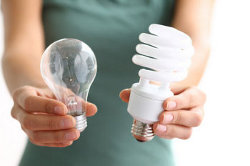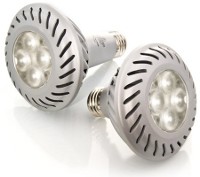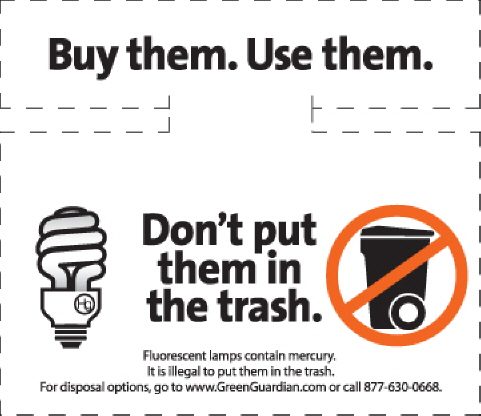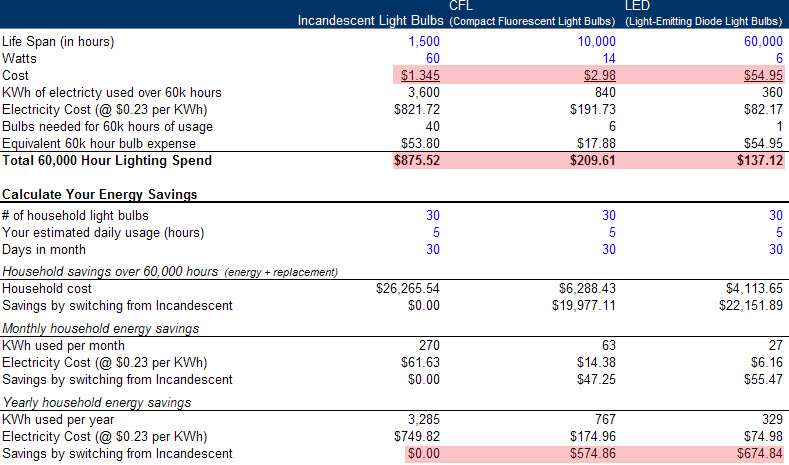Please, PLEASE do not throw your CFL bulbs in the trash!
I was motivated to write this post only because of the gross misunderstanding about compact fluorescent (aka CFL) light bulbs I stumbled upon recently.
I was in my local hospital for some pulmonary tests and chest x-rays and there was a janitor-type-person replacing some of the burned-out/failed CFL bulbs in the ceiling of the lobby of the registration area with newer CFL-style bulbs.

While I was waiting, I casually asked him if the hospital had done any sort of cost-savings analysis on incandescent vs. CFL at all. He said they had, but some bulbs “just go bad”, adding a little bit to the cost, but that it saves the hospital thousands of dollars every year.
I mentioned that my own personal power bill dropped almost 50% in the first summer alone, after switching every single bulb in the house to CFL from incandescent. I verified this with my “Watts Up” meter.
It was then that the registration woman at the front desk said:
“Oh, when those go bad at my house, I just throw them in the trash and buy some more…”
YIKES!
I had to stop right there and let her know that not only is it VERY bad for the environment to throw them in the trash, it’s also illegal to do so.
In my home state of Connecticut, CFLs are accepted at household hazardous waste collections. We even have a handy schedule of household hazardous waste collections. Some counties in CT also permit the recycling of CFLs and other fluorescent lamps at local transfer stations or other drop sites.
If that’s too inconvenient for you, you can also bring any brand of CFL, regardless of where it was purchased, to any CT Home Depot or IKEA stores for recycling.
Other states may be complying with this and offering the same services as well. The EPA has a handy page on Mercury-Containing Light Bulb Recycling. Earth 911 also has excellent resources where you can enter your zip code to locate recycling centers in your area.
This woman at the registration desk had no idea that CFL bulbs contained mercury; a toxic heavy metal, which could easily leech into the groundwater of the local landfill or into the soil that crops are grown from. Each bulb only contains about 3-5 milligrams of mercury (about the size of the tip a ballpoint pen) but thousands of these bulbs in a landfill does present a significant issue. 1mgHg improperly disposed of can contaminate up to 1400 gallons of drinking water.
But what if I accidentally break a CFL bulb?
If, in the process of removing or disposing of a CFL bulb, you manage to break the actual bulb, here are some safety precautions to take:
- Open all of the windows in the general area to ventilate for at least 15 minutes before beginning your clean-up
- Don’t use a vacuum cleaner as this will spread mercury into the air, potentially depositing it on other surfaces, the least of which would be your lungs!
- Wear gloves when cleaning up, preferably PVC or non-porous gloves of some type. Leather or fabric gloves are not sufficient to protect your skin from cuts from the glass, or from mercury entering those cuts!
- Use a disposable brush to gently sweep up fragments. Throw this brush away in the same toxic waste container as the bulb fragments when you are done using it. Do not throw the brush in the general trash bin, and don’t re-use the brush to sweep your floor or counters or anything else.
- Use a moist paper towel to help pick up remaining tiny fragments of the bulb and mercury. Dispose of this in the same hazardous waste container as the bulb body itself. Dry paper towels will just scatter the glass dust and bits around; moisten it first.
- Wrap the larger pieces of glass in layers of newspaper and place in a sturdy resealable bag or container along with anything else you used to clean up the mess.
Are there any safer options besides using CFL to reduce consumption?
You CAN use CFL bulbs responsibly, but if you really want to go pure, and eliminate not only the heavy, toxic mercury from your bulbs, but also reduce the power consumption, heat and size… just jump straight to using an LED light bulb instead. LED bulbs also do not flicker like incandescent and CFL bulbs do.
Here is a useful table for comparison (click to zoom to full size):

LED bulbs are lot more expensive right now, for an equivalent amount of lumens, but that price will go down sharply over the next year. Some other obvious benefits of LED over CFL (and incandescent) are:
- LED lights do not “shatter” or break like traditional incandescent or CFL casings
- They remain much cooler to the touch. This means you can have closer shades or other elements around the bulbs, such as paper lamps, without the fear of burning your house down
- LED lights can be put into high-vibration situations, where a filament bulb or CFL would be damaged pretty quickly
- LED light bulbs do not flicker. This means no more headache, eyestrain or monitor flicker from using them (like you would get with standard florescent bulbs)
- LED lights last longer, MUCH longer (decades longer), so they don’t need to be changed as often
If you’re interested in looking at replacing some of your CFL bulbs with the safer, lower consumption LED lights, check out C. Crane Company, LED Light or EarthLED for starters and information about the technologies used.
I haven’t entirely converted my CFL usage to LED usage, but I am moving in that direction, rapidly…



Janetta Dardon said on February 10th, 2010 at 11:56 pm quote
I love reading your article, I have also bookmarked your weblog for the future and added it to my RSS feeds. Thanks!